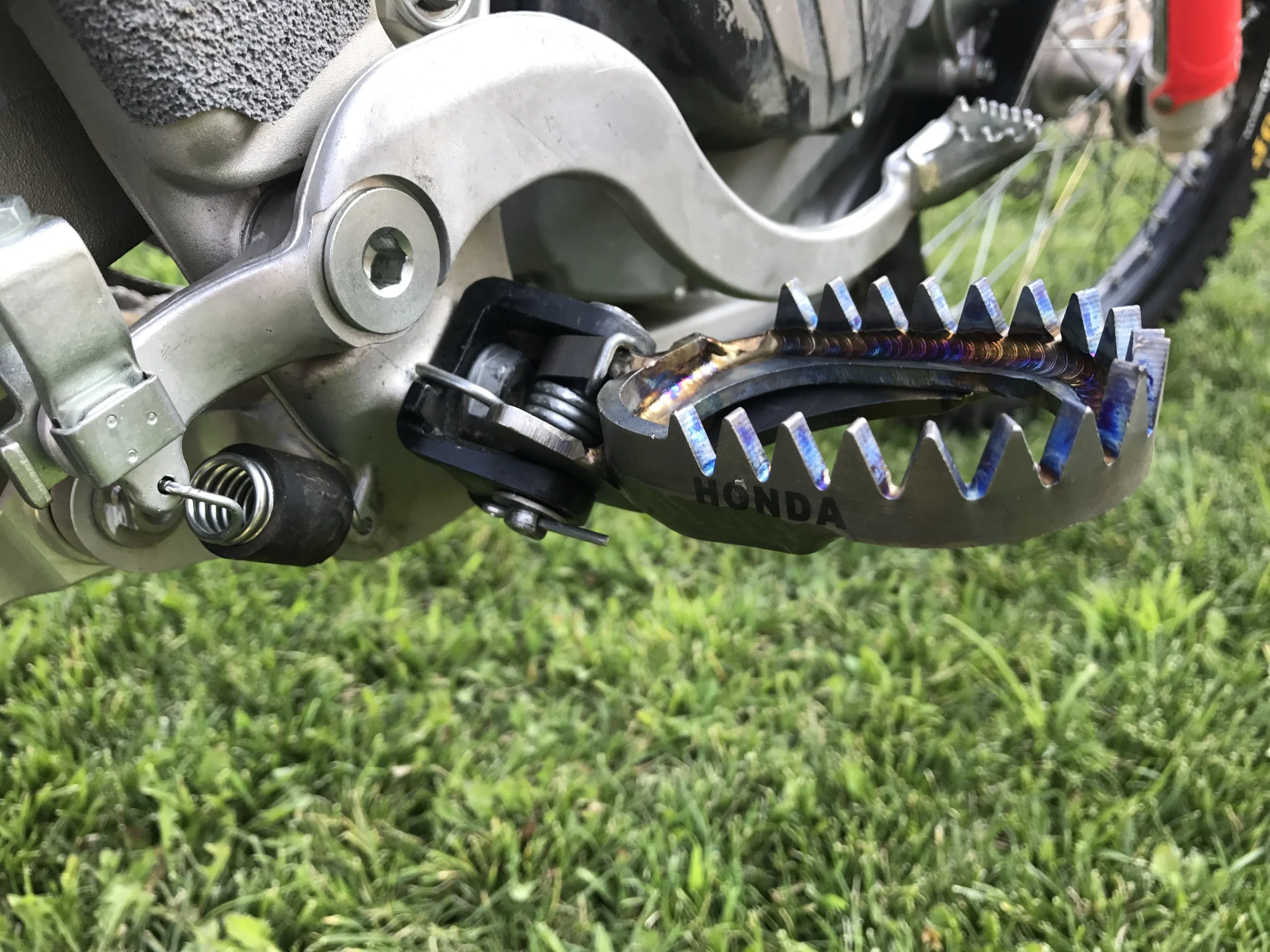The 2018 Yamaha YZ450F is the best suspended motocross bike that is available, but that doesn't mean I’m going to leave it alone. When I got the call from Enzo Racing’s Ross Maeda to see if I wanted to test a couple fork parts, I was more than happy to see if we can make the KYB SSS fork even dreamier.
We didn't go with a fork re-valve as we wanted to see if the parts provided made a noticeable change to the existing stock 2018 valving. I personally like this approach because if you're currently happy with your valving and just needed to fine tune this was a great test to see if the Enzo parts provided could make a difference. I am 170 pounds and a front end steering rider, but I felt the stock fork setting (once broken in) was a little soft on de-cel and jump faces/transitions. Ross installed a 5.1 fork spring (5.0 is stock) and sent me out on the track to see if I liked that change, which I did. It provided a little more hold up and I could ride over the front more while being more aggressive. It did give me slightly less front end traction on lean in (coming into corners), but the trade off for me was well worth it. I did however need a little more comfort on the top part of the fork’s stroke (acceleration, light bump absorption).
Next up, Ross installed the Enzo Technica fork spring perch. This perch flows more oil and is a machined aluminum piece that Ross at Enzo makes for several different models. Once the spring perch was installed, they sent me back out on the track and I immediately noticed a difference on lean angle traction. The front end traction that I lost with the 5.1 front fork spring I gained back and then some. With the spring perched installed I immediately felt more front end bite coming into corners, especially on flat corners. Where the front tire felt like it was riding more on top of the dirt now I could feel the knobs digging into the terrafirma more when I went to cut down into a rut. Another part of the fork’s action that was improved was on braking bumps. The stock Yamaha fork isn't harsh by any means, so I guess the best way to describe what I felt was more of a plush feel when hitting bumps (on or off throttle). Let me try and describe what I am feeling to you all while you are sitting there reading this: Let’s say the stock fork is a basketball that you drop 10 feet up in the air, to the ground. The Enzo fork with their spring perch installed is like dropping the same basketball to the ground, but now from only from 5 feet up in the air. This is the sensation that I get when riding that is most describable to you all. It cuts the KYB fork’s hit to each bump (or sensation to your arms) in half. I was so amazed that I had to go back to the stock spring perches just to be sure what I was feeling was in fact that much better. If you listen to my podcast, you know how I rate each test as it’s off of a numeral system. On my sheet the numeral system would look something like this: Stock fork = 3 baseline. Enzo Fork with spring perches installed = 3.5. A noticeable, positive change!
For the last test Ross installed the Enzo Sub-Tank System that was so popular several years ago. However, this is not the same system that was around back then, this is more like a 2.0 version of the Sub-Tank System. The Enzo Racing Sub-Tank system is adjustable by bleed setting screws on the side. This adjustment is tunable using a small flat blade screwdriver. The standard setting is 4 complete turns out (counterclockwise) from maximum (all the way tight clockwise). This adjustment setting creates a restriction in the tanks which will control the air compression volume depending upon the speed that the fork is compressing. In simpler terms, the tighter the adjustment, the sooner the firmness of the fork will occur. If you are experiencing bottoming, you should turn the adjuster clockwise IN 1 turn at a time. If the action feels too stiff, turn the adjuster counterclockwise OUT 1 turn. I left it on the stock setting for this test, just to get a feel for what it does. What I can tell you is that the fork still has that plushness and front end bite it had with the Enzo Spring Perches, but I can feel more of a damping feeling near the end of the fork’s stroke now with the Sub-Tanks installed. This wasn't a huge improvement, but I could hit faces of jumps harder and flat land singles further. Basically this system works great if I was racing and getting aggressive while trying to make the pass on a rider. I like how putting these Enzo Sub-Tanks on did nothing to my newfound front wheel traction that the Enzo spring perches gave me.
At the end of the day I got an even better (more comfortable) feeling front end and didn't have to re-valve my fork. I will be trying a full Enzo re-valve in the future, but I thought for keeping the stock Yamaha’s valving in and only adding a few pieces to the fork, it really helped the fork’s action and ride attitude of the bike around the track for the better. The spring perches and sub-tank system are available now. You can call Enzo at (714) 541-5218 for pricing or visit www.enzoracing.com
For any questions about this test or any other burning questions please feel free to email me at kris@keeferinctestingcom.




















